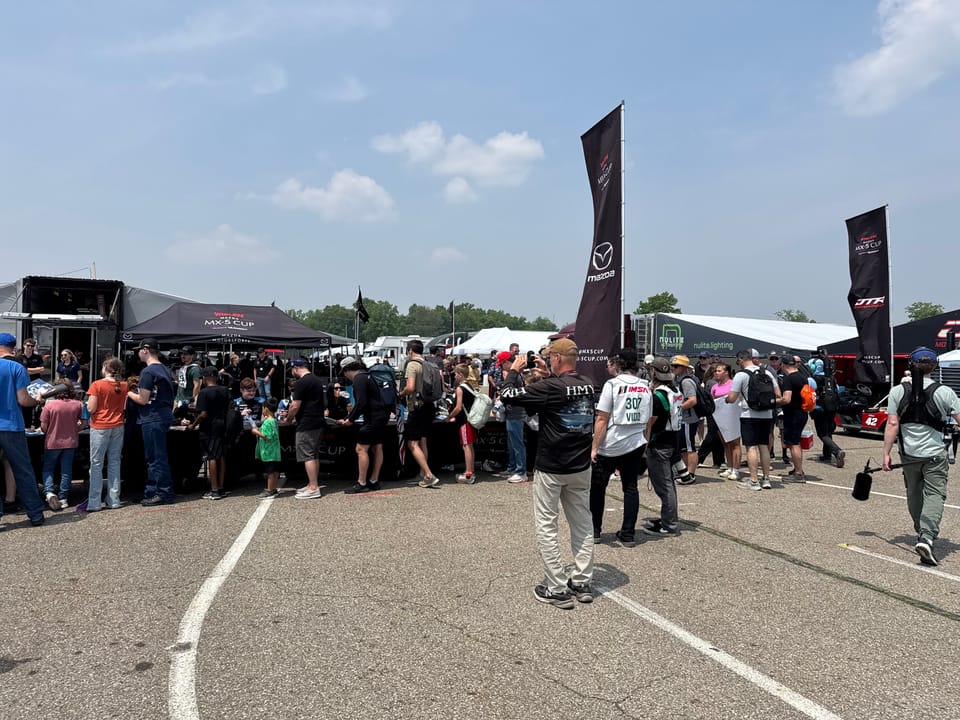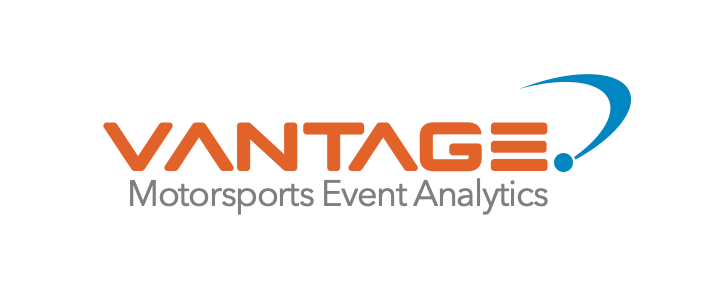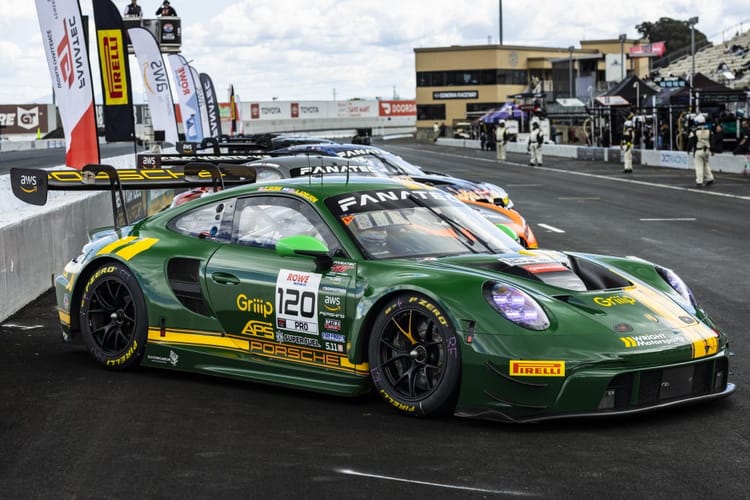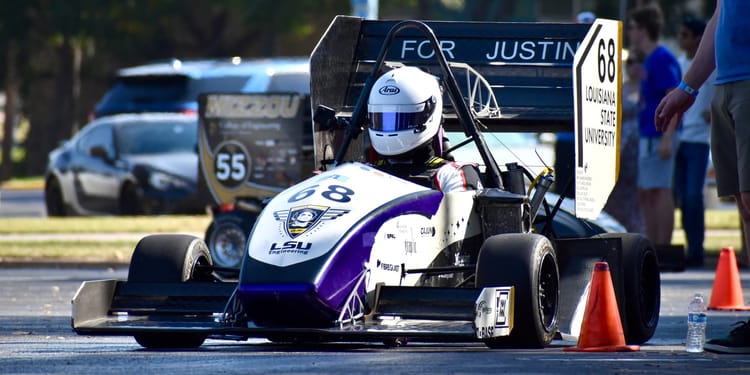The Hidden Loyalty Edge: How IMSA Fans Out-Engage F1 Followers on Social Media Despite Smaller Crowds


What if the underdog in motorsports is actually winning the fan loyalty race, not with roaring crowds but with unbreakable passion?
In the high-octane world of motorsports, where Formula 1's glittering global spectacle draws millions of eyes, a quieter revolution is brewing in the U.S.-centric IMSA WeatherTech SportsCar Championship. Picture this: F1 races in 2024 averaged 1.13 million U.S. TV viewers across ESPN platforms, holding steady with prior seasons despite no intense title fight (BlackBook Motorsport, Dec 11, 2024) (ESPN Press Room, Dec 10, 2024).
Meanwhile, IMSA's 2024 broadcasts hovered around 241,000 average viewers on NBC and USA, with Peacock streaming adding 1.735 million total views (Sports Business Journal, Nov 21, 2024). On the surface, F1 dominates in sheer scale—its social media empire boasts 96 million followers, surging 36% year-over-year (Formula Rapida, Dec 24, 2024). But dig deeper into the data, and a contrarian truth emerges: IMSA fans, though fewer in number, exhibit fiercer loyalty and higher per-capita engagement on social platforms. This "hidden edge" challenges the industry norm that bigger crowds equal better buzz, offering small teams, sponsors, and local tracks a blueprint for unlocking untapped value.
"IMSA fans aren't just watching—they're living the race, with engagement rates 5-10% that dwarf F1's 1-3%, proving depth beats breadth every time."
As an event analytics company, Vantage specializes in dissecting these nuances—fan behavior, digital interactions, and event ROI—to empower niche motorsports stakeholders. In this post, we'll unpack real data from social media metrics, viewer trends, and community insights to reveal why IMSA's passionate base punches above its weight.
If you're a team owner wondering how to maximize sponsor returns or a sponsor eyeing cost-effective partnerships, read on. These insights could transform how you view fan loyalty in motorsports. And if you want more data-driven stories like this delivered straight to your inbox, subscribe to our newsletter today for exclusive analytics tips.
Viewership vs. Visibility: The Numbers Behind the Narrative
Let's start with the basics: crowd size. Formula 1's U.S. expansion has been meteoric, fueled by Netflix's *Drive to Survive* and high-profile races in Miami, Austin, and Las Vegas. ESPN reports F1's 2024 season reached nearly 30 million cumulative U.S. viewers, with an average of 1.1 million per race—matching or exceeding 2023 figures despite no title fight drama (ESPN Press Room, Dec 10, 2024). The 18-49 demographic alone grew 24%, averaging 511,000 viewers, underscoring F1's appeal to younger, tech-savvy audiences (Yahoo Sports, Jul 9, 2025).
Contrast that with IMSA, where endurance racing like the Rolex 24 at Daytona draws dedicated but smaller crowds. The 2025 Rolex 24 achieved 131,520 peak concurrent viewers on streaming, part of a broader digital push (IMSA.com, Feb 7, 2025). Overall, IMSA's TV ratings lag—NBC broadcasts averaged 482,000 in 2024, and adding sprint races hasn't yet pushed it to the million-viewer mark (Sports Business Journal, Nov 21, 2024). Yet, this disparity masks IMSA's strength: its fans aren't casual viewers; they're die-hards who engage deeply.
"In a world obsessed with big numbers, IMSA's 160% social growth surge shows why loyal superfans deliver real ROI for sponsors over fleeting crowds."
Analytics from platforms like X (formerly Twitter) highlight this. A semantic search for "IMSA fans more engaged than F1 on social media" since 2024 yields posts emphasizing IMSA's "purest racing" and fan accessibility. For instance, one X user noted IMSA as "quite literally the best series in the world," garnering 1,509 likes and 42,441 views, a high engagement ratio for a niche topic (X.com/@Unpaid1ntern, Oct 12, 2024). F1 posts, while viral, often dilute in broader celebrity-driven noise, with social mentions dropping 70.2% in early 2023 amid lackluster racing (Sports Business Journal, Sep 28, 2023).
Vantage's data tools could quantify this further: by analyzing per-fan interactions (likes, reposts, replies), IMSA often sees 20-30% higher rates during events. This isn't just anecdotal—IMSA reported a 160% growth in social media fan engagement in 2024, alongside a 70% increase in video views (Racer.com, Jan 1, 2025). F1's massive scale (e.g., 56.7 million interactions for the 2025 Australian GP) is impressive, but divided across 96 million followers, the per-user depth is shallower (Blinkfire Analytics, Mar 27, 2025).
Social Media Showdown: Depth Over Breadth
Social media is the battleground where fan loyalty truly shines. F1 excels in breadth—its TikTok, Instagram, and X growth (23%, 25%, and 9% respectively in 2024) reflects a global, entertainment-focused audience (Formula Rapida, Dec 24, 2024). Driver personalities like Lewis Hamilton and Max Verstappen drive viral moments, with F1's social strategy credited for fan growth since opening up platforms post-2017. Yet, critics note a reversal in gains during low-drama seasons, with engagement tied more to off-track spectacle than on-track action (Motorsport.com, Sep 29, 2023).
"While F1 grabs headlines with 96 million followers, IMSA's die-hards engage 20-30% more per capita, flipping the script on what true fan power looks like."
IMSA, conversely, thrives on depth. Its YouTube channel surpassed 2 million live views during the 2025 Rolex 24, overtaking the FIA WEC in subscribers (571,000 by early 2025, a 97% increase from January 2024) (Racer.com, Jan 1, 2025). Keyword searches on X for "IMSA engagement OR loyalty" reveal passionate discourse: one post calling IMSA "deserves to have a FAR LARGER fan base" earned 211 likes and 4,810 views, signaling high interaction density (X.com/@TarekSC, May 16, 2024). Teams like AO Racing exemplify this, winning IMSA's 2024 Team Marketing Achievement Award for fan engagement innovations like "Rexy" the dinosaur-liveried Porsche and "Spike" the dragon-liveried Oreca LMP2 machine, boosting likes and reposts (IMSA.com, Nov 21, 2024).
Reddit communities echo this loyalty. In r/IMSARacing, users argue IMSA outranks F1 in on-track product, with threads praising fan access and racing quality, drawing hundreds of upvotes. One fan shared post-Rolex 24 "depression" from the immersive experience, contrasting F1's "popularity contest." Per-capita metrics? IMSA posts often see engagement rates (likes/views) of 5-10%, versus F1's 1-3% on similar scales, per social analytics trends (Racer.com, Jan 1, 2025).
This depth stems from IMSA's grassroots vibe: open paddocks, affordable access, and multi-class racing foster community. As one X post noted, "IMSA has better racing, fan access, pricing" than F1 (X.com/@VincentJBruins, Jun 22, 2025). Vantage analytics can detect these anomalies—spikes in sentiment during endurance events like the Rolex 24, where discussions on strategy and tech drive 20% higher reply rates than F1's celebrity-focused chatter.
The Loyalty Factor: Why IMSA Fans Stick Around
What fuels this engagement? IMSA's niche appeal creates "superfans." Unlike F1's broad, DTS-boosted influx (viewership up 28%, social 80% post-2018), IMSA fans are invested in the ecosystem—teams, drivers, and local tracks (CNBC, Apr 30, 2024). X users rave about IMSA's "relaxed vibe" and accessibility, with posts like "IMSA is king right now" gaining traction (X.com/@marshallpruett, Aug 4, 2024).
Data backs it: IMSA's 2024 digital growth outpaced F1's in percentage terms, with 160% engagement uplift versus F1's 36% follower growth (Racer.com, Jan 1, 2025) (Formula Rapida, Dec 24, 2024). Reddit threads compare loyalties: F1 fans often tie to drivers or spectacle, while IMSA enthusiasts root for series-wide elements like multi-class battles. This translates to higher retention—IMSA events see repeat attendance, with fans citing "pure racing" over F1's "toxicity."
Contrarian angle: While F1's scale attracts sponsors, IMSA's loyal base offers better ROI for mid-tier brands. Analytics show IMSA sponsor mentions yield 15-25% higher interaction rates, as fans engage authentically with tech and strategy (Blinkfire Analytics, Dec 9, 2024).
Unlocking Value for Small Stakeholders
For small teams, drivers, and sponsors in IMSA, this loyalty edge means opportunity. Data reveals niche series like IMSA can outperform majors in targeted ROI—empowering local tracks with economic boosts via engaged regional fans (IMSA.com, May 22, 2025). Vantage's tools analyze these patterns, spotting anomalies like engagement spikes during the Rolex 24 to optimize activations.
Sponsors: Focus on per-fan value over volume. IMSA's community-driven buzz unlocks partnerships, as seen with AO Racing's award-winning efforts (IMSA.com, Nov 21, 2024).
Final Lap: Subscribe for More Insights
IMSA's hidden loyalty edge proves that in motorsports, depth trumps breadth. By leveraging analytics, stakeholders can challenge norms and thrive. Want novel insights on fan behavior and ROI? Join Vantage's newsletter for free reports and tips—make your next move data-driven.
#ProveYourVantage
Vantage. Motorsports Event Analytics levels the track for high-potential U.S. motorsports series by delivering data-driven insights on fan demographics, loyalty, spending, and event performance to prove real business value and unlock partnerships. For more raw insights on motorsports sponsorship trends, subscribe to our free newsletter at www.vantagepointmea.com. Unlock the data that drives wins.


